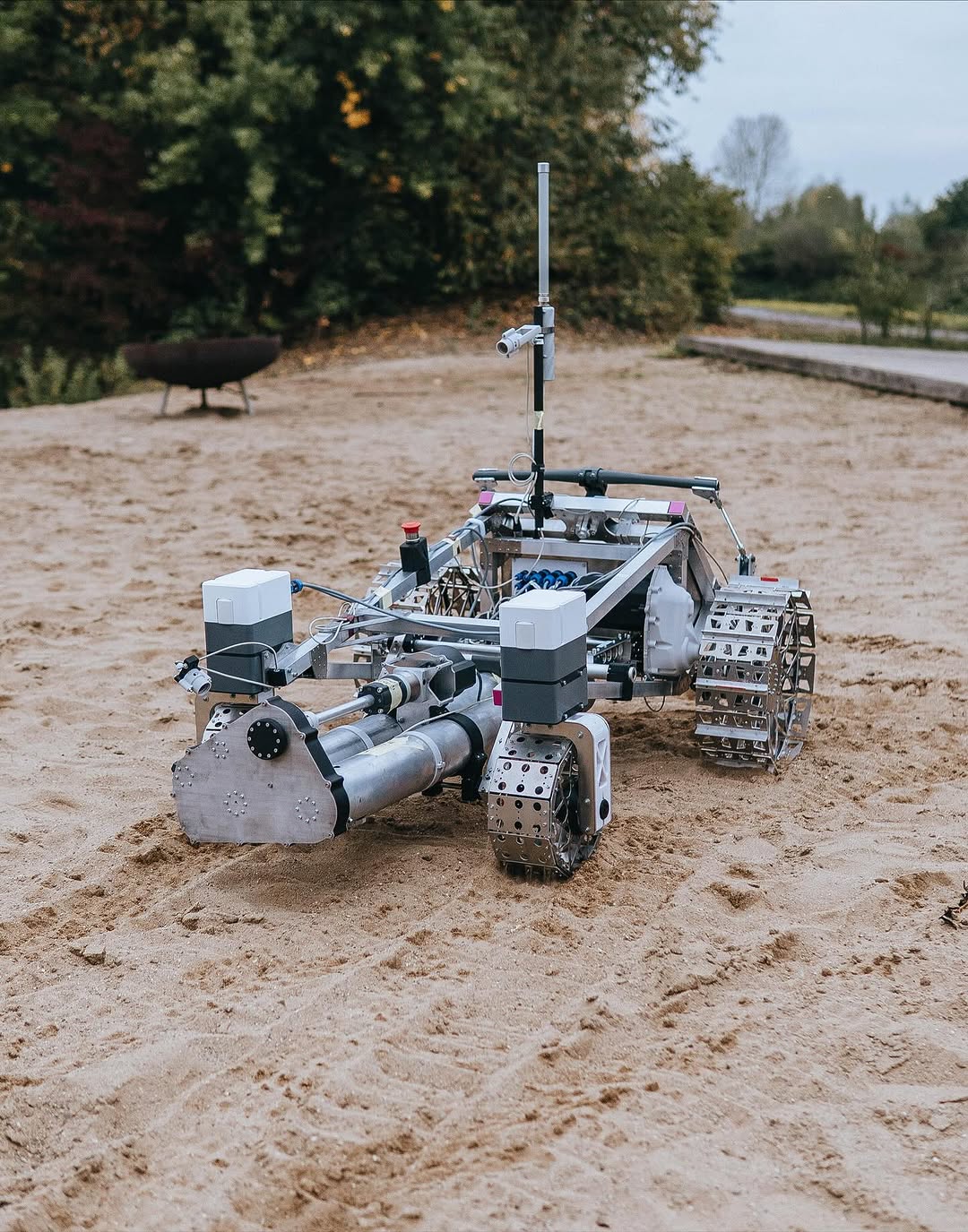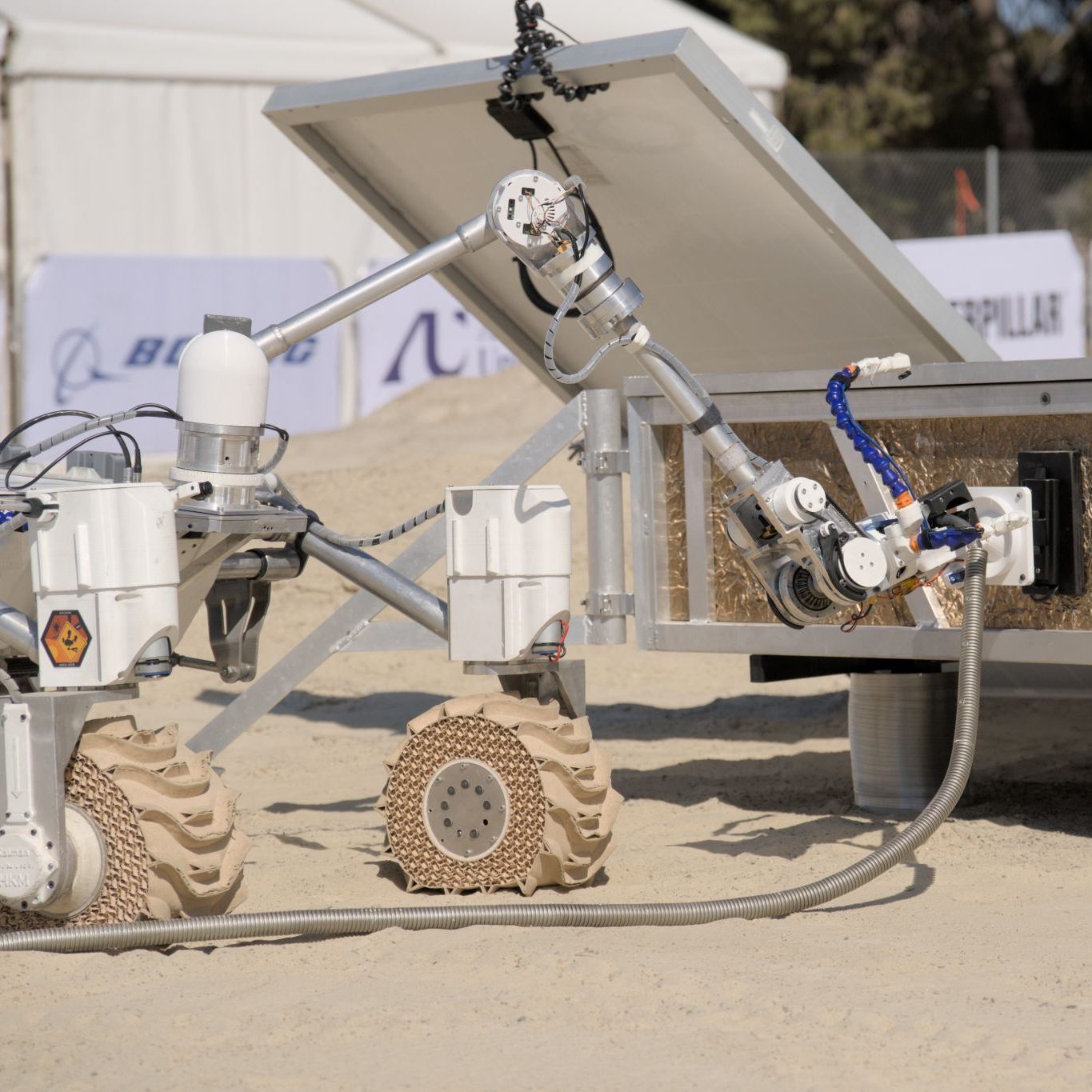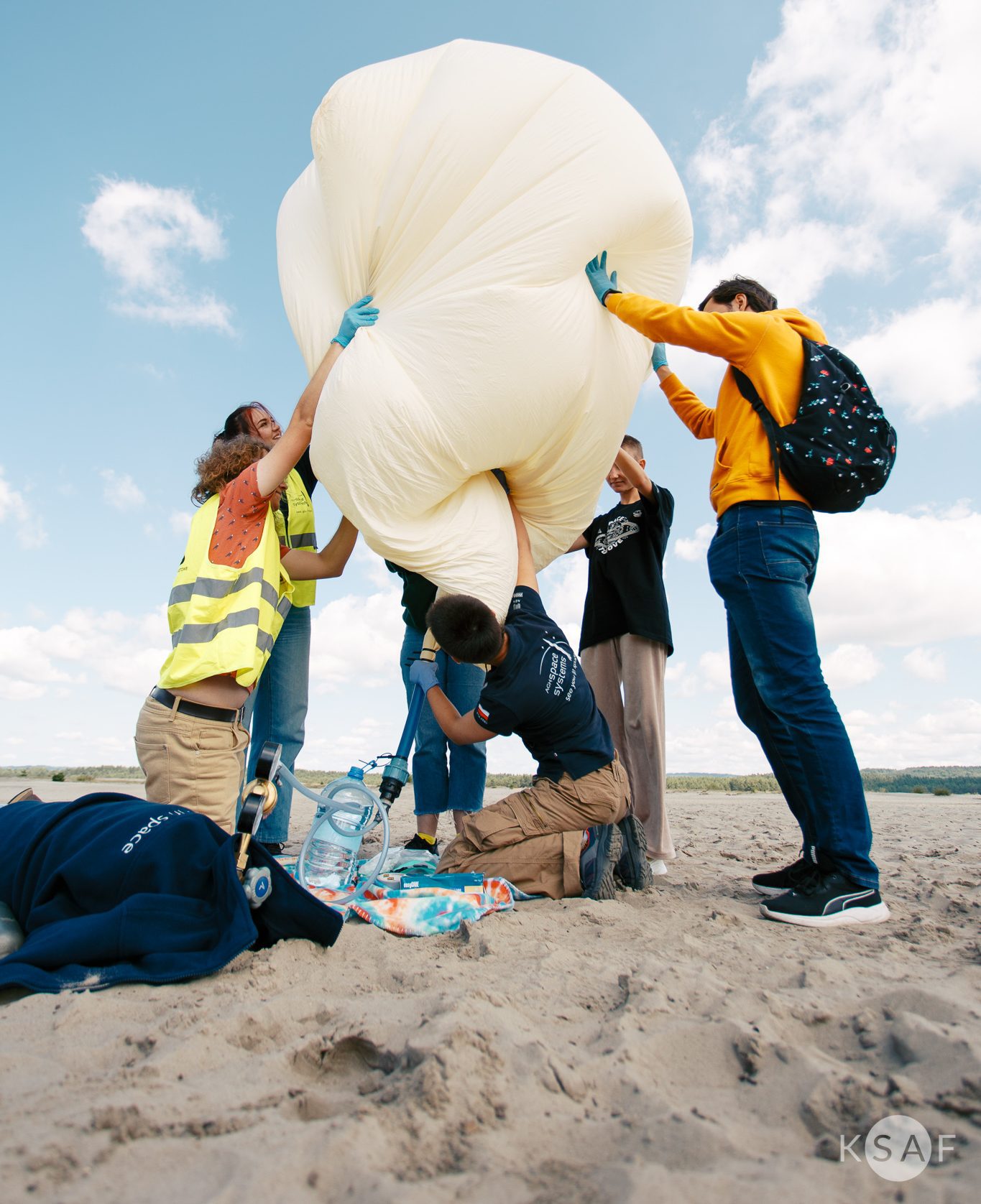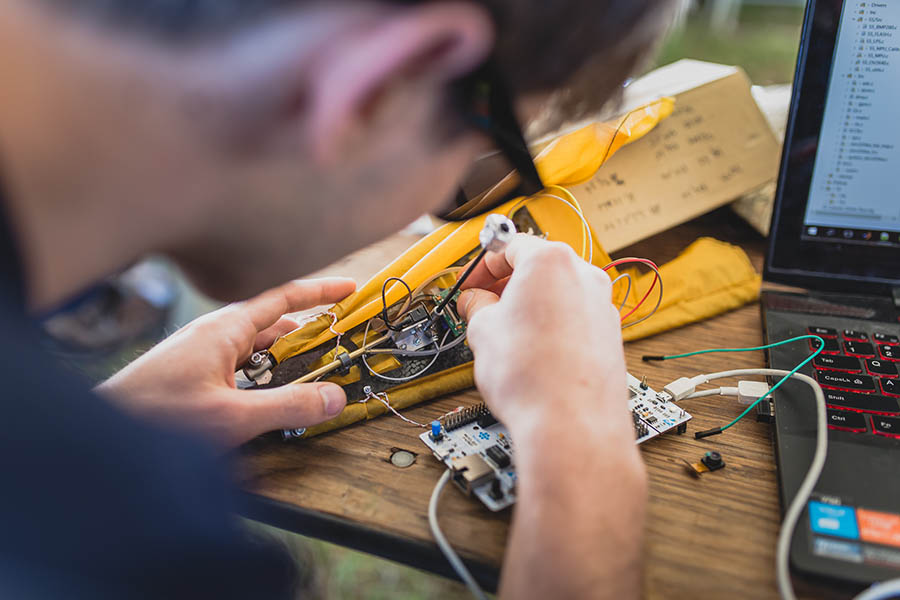


Our members are currently competing in the Space Resources Challenge in Cologne! The DISTOBEE team is testing its mining rover in unique simulated lunar conditions, facing teams from all over Europe. It’s a great honor and another step toward developing technologies for resource extraction beyond Earth.

Kalman is one of two planetary rovers built by AGH Space Systems. It is the successor to the first design, Phobos, and features entirely new technical solutions. As a result, it is an agile, four-wheeled research vehicle. It is equipped with vision systems that enable remote control and terrain documentation.
The rover has a manipulator that allows for object handling, performing basic repairs, and operating control panels. Additionally, it features a mobile research laboratory for soil sample analysis.
The goal of the project is to develop a fully functional robot capable of traversing the challenging Martian terrain, testing new technical solutions essential for exploration missions, analyzing soil samples in search of signs of life on Mars, and assisting astronauts with minimal operator intervention.

3-TTK is the latest hybrid rocket developed by AGH Space Systems. It is the next iteration of a hybrid-powered sounding rocket, incorporating innovative solutions and technologies based on experience gained from previous projects.
One of the project’s goals was to participate in the Spaceport America Cup 2022 and Spaceport America Cup 2023 competitions. The rocket competed in the 10,000-foot altitude flight category. Its mission was to carry a research payload weighing up to 4 kilograms to a designated altitude and ensure its safe return using a recovery system.
The development of the 3-TTK rocket began in October 2021. Building on experience from the PROtotype and Skylark rocket projects, the team implemented a series of modifications and structural improvements.

Besides rocket projects, Martian rovers, and planetary probes, students from AGH Space Systems have conducted stratospheric balloon missions, testing electronics and various scientific experiments. They have also participated twice in the international Global Space Balloon Challenge.
Between 2015 and 2016, in collaboration with the European Space Agency (ESA) and the Copernicus Foundation, the team carried out four stratospheric balloon flights. During the first two missions, they tested electronics for pressure measurement, temperature measurement, and GPS tracking.

Between 2015 and 2019, AGH Space Systems regularly participated in the international CanSat Competition, co-organized by NASA and held in the United States. The team designed probes simulating planetary landers, which were tasked with collecting telemetry data and maintaining stable orientation while descending from heights of up to 1 km. Each mission required not only precise construction of the devices but also the preparation of comprehensive project documentation, which was a key element in the team’s evaluation.
Thanks to extensive preparations and high scores in key stages of the competition, AGH Space Systems earned numerous awards, including first place in 2015 and third place in 2019, competing against the best teams from around the world.